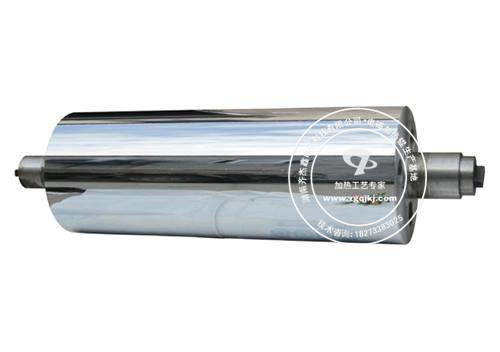Selection of Surface Treatment Method for Electromagnetic Heating Roller
作者:管理员 时间:2020-06-04 09:12 来源:未知
浏览:次
Common treatment methods for roller surface include chromium plating, spraying teflon and spraying ceramic. People often think, which one is better? This will start from the characteristics of these methods.
Of the three methods, chrome plating is the most commonly used. Chromium plating can be divided into two major categories: decorative chromium and hard chromium. The surface plating of the roller is basically hard chrome.
The thickness of electroplating chromium is mostly in 0.1~0.2mm, of course, can also be a bit thicker, can also be a bit thinner, according to the need to decide. If it is hot roller, it is generally recommended not to be too thick, the main reason is that the coefficient of chromium thermal expansion is relatively small, only half of steel. If the heating is relatively fast, it is easy to cause chromium layer surface crack. Therefore, the thickness of chromium layer of most hot rollers is less than 0.012mm. If it is an ordinary roller, there is no such requirement, and thickening the chrome layer is a common way to compensate for the insufficient diameter.
The surface of the chrome plating layer does not look good, very rough, which requires fine grinding. If you want a mirror, you have to polish it. The roughness of chrome layer can be very high after polishing, up to level 14 (Ra < 0.0125mm). Hard chromium is used at a high temperature and usually works stably at 500 ℃.
Teflon falls into two categories:
1).PTFE: usually green, some grey. PTFE, also known as the "king of plastics", is a chemical called polytetrafluoroethylene. The spraying thickness is generally 0.03-0.04mm;
2) PFA: grey, the spraying thickness is generally 0.05-0.06mm, or thinner.
Teflon surface roughness is not high, most of which is Ra 0.5~1.5. However, teflon surface is usually used in occasions where anti-adhesion is required due to its chemical properties. Teflon is used at a moderate temperature, usually no more than 260.
There are many kinds of industrial ceramics, the most common of which is tungsten carbide (WC). Mirror (Ra 0.25~0.3), coating thickness generally ≥15 wires (0.15mm), up to 30-40 wires (0.3-0.4mm). High hardness, up to HRC 75~76. But the price is expensive, unit area price for chrome plating or spraying teflon 10 times or so.
Ceramic thermal spraying method has two main: supersonic flame spraying, plasma spraying. Conventional spraying material: wc-12% Co; WC - co - 7 ni; WC - co - 10 4 cr; NiCr Cr3Cr2-20 ~ 25%; 316 stainless steel; Ni series superalloy, etc. Plasma spraying conventional spraying material: Al2O3; TiO2 Al2O3-3%; Al2O3-13 tio2; Al2O3 and tio2 40; Co2O3; Y2O3 ZrO2-8%; TiO2, etc. The surface roughness of sprayed ceramics is better than that of fluoron, but not as good as that of hard chromium. Take WC as an example, the best roughness can only be about Ra 0.025.
In general, hard chromium plating is the most common method, cost-effective; The main purpose of spraying teflon is to prevent adhesion. Spraying ceramics have more functions, which is the most used wear-resistant.
Which good, according to the actual needs of customers to choose.

